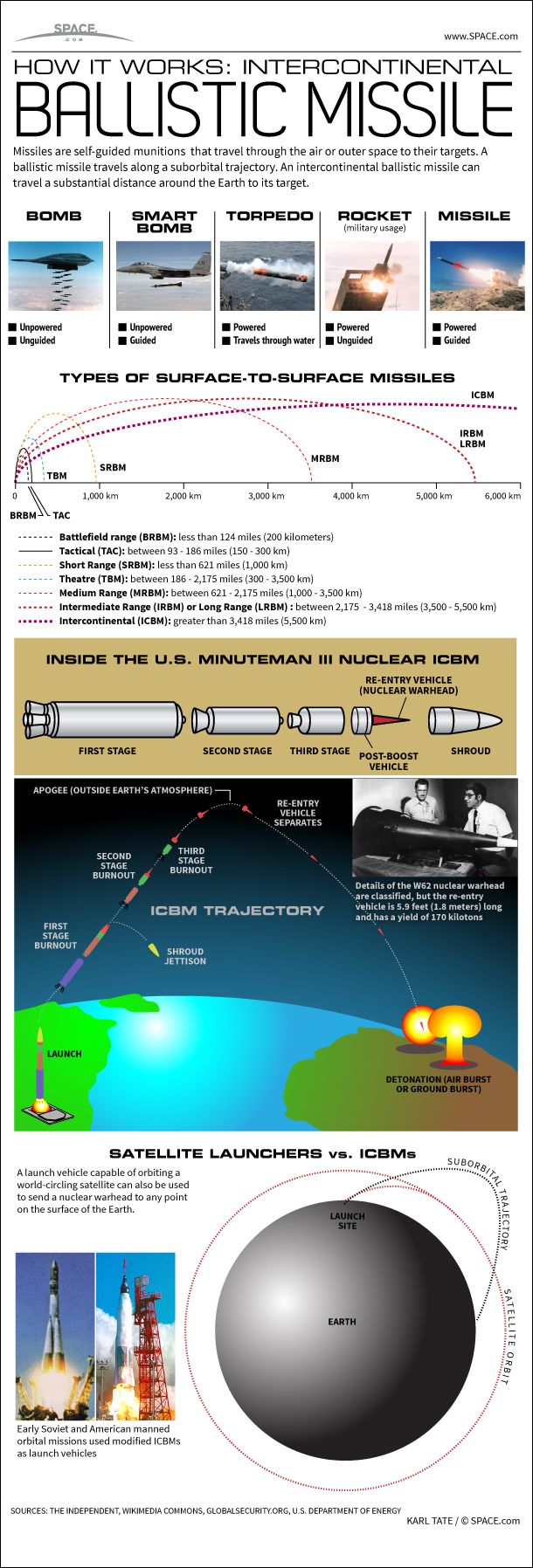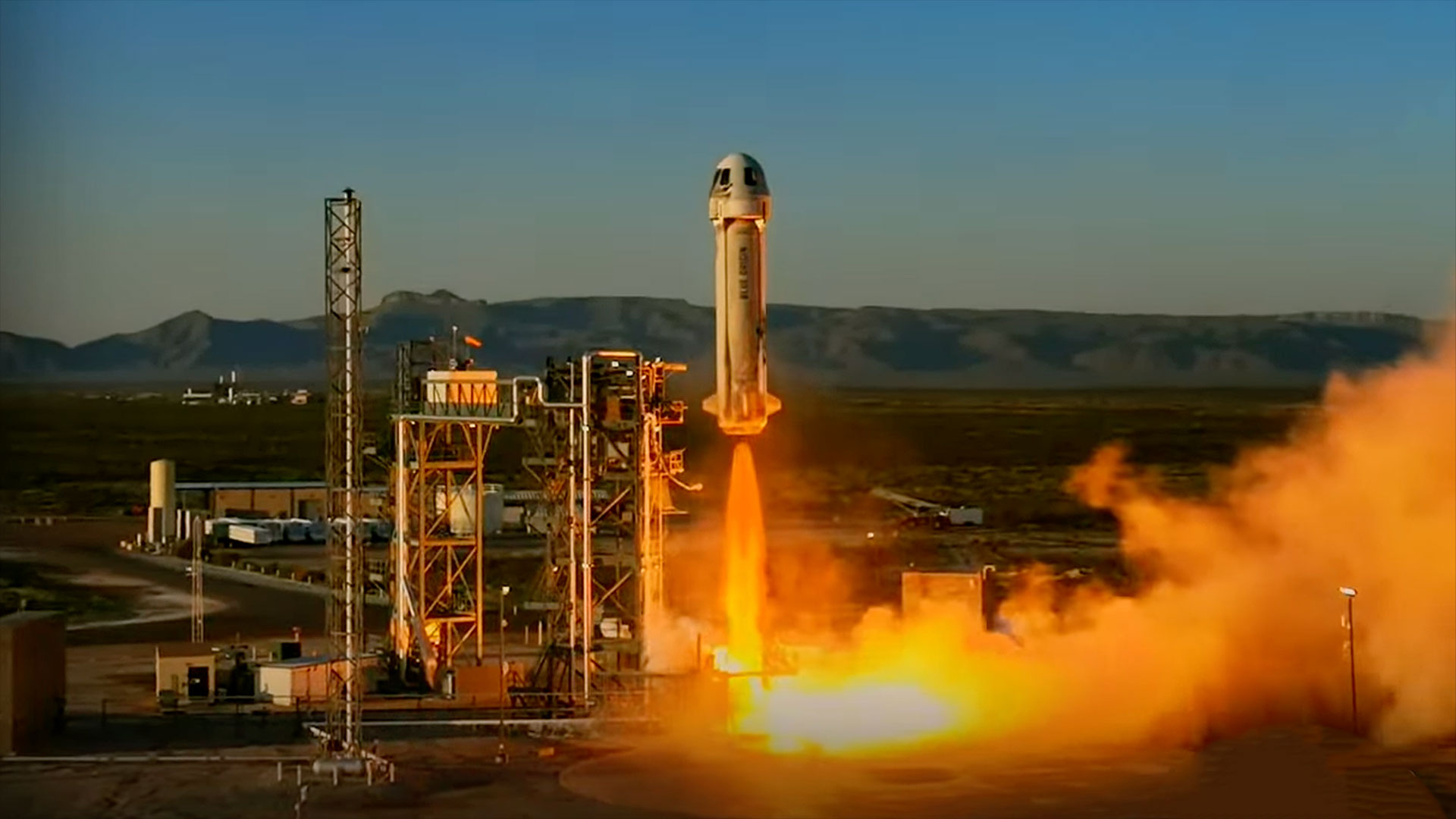How Intercontinental Ballistic Missiles Work (Infographic)

Missiles are self-guided munitions that travel through the air or outer space to their targets. A ballistic missile travels along a suborbital trajectory. An intercontinental ballistic missile can travel a substantial distance around the Earth to its target.
As opposed to bombs, torpedoes and rockets, missiles are both powered and guided. If unguided, it would be termed a rocket. A bomb is neither powered nor guided. A guided bomb is called a "smart" bomb. If powered and traveling underwater, it is termed a torpedo. [Spectacular Missile Launch Photos]
Missiles are classified according to their range:
Battlefield range (BRBM):less than 124 miles (200 kilometers)
Tactical (TAC): between 93 - 186 miles (150 - 300 km)
Short Range (SRBM): less than 621 miles (1,000 km)
Theatre (TBM): between 186 - 2,175 miles (300 - 3,500 km)
Medium Range (MRBM): between 621 - 2,175 miles (1,000 - 3,500 km)
Intermediate Range (IRBM) or Long Range (LRBM) : between 2,175 - 3,418 miles (3,500 - 5,500 km)
Intercontinental (ICBM): greater than 3,418 miles (5,500 km)
The U.S. Minuteman 3 ICBM is a three-stage booster. The payload is a single W62 nuclear warhead with a yield of 170 kilotons. The booster places the warhead on a suborbital trajectory. At its height, the vehicle is outside the Earth’s atmosphere.
The warhead’s re-entry vehicle falls through the atmosphere to its target. The detonation can be an air burst or ground burst.
A launch vehicle capable of orbiting a world-circling satellite can also be used to send a nuclear warhead to any point on the surface of the Earth.
Breaking space news, the latest updates on rocket launches, skywatching events and more!
Early Soviet and American manned orbital missions used modified ICBMs as launch vehicles.
Follow Space.com on Twitter @SPACEdotcom. We're also on Facebook & Google+.

Karl's association with Space.com goes back to 2000, when he was hired to produce interactive Flash graphics. From 2010 to 2016, Karl worked as an infographics specialist across all editorial properties of Purch (formerly known as TechMediaNetwork). Before joining Space.com, Karl spent 11 years at the New York headquarters of The Associated Press, creating news graphics for use around the world in newspapers and on the web. He has a degree in graphic design from Louisiana State University and now works as a freelance graphic designer in New York City.
